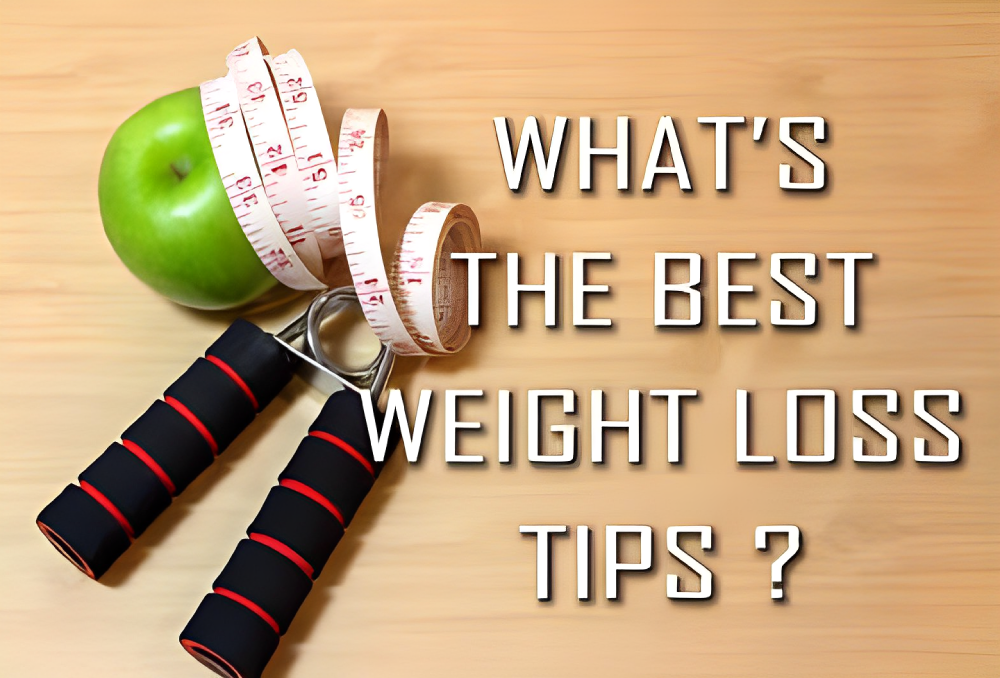The Power of Portion Control: 10 Tips for Weight Loss That Actually Work
Losing weight can be a daunting task, especially with the overwhelming amount of information and advice available. From fad diets to extreme workout routines, it can be difficult to know what actually works. However, one tried and true method for weight loss is portion control. By managing the amount of food you consume, you can effectively lose weight and maintain a healthy lifestyle. Here are 10 tips for weight loss through the power of portion control that actually work.
1. Use smaller plates and bowls: The size of your plate can have a significant impact on how much you eat. By using smaller plates and bowls, you can trick your brain into thinking you are consuming a larger portion. This can help you feel satisfied with less food.
2. Measure your food: It’s easy to underestimate how much food you are actually consuming. By measuring your food, whether it’s with measuring cups or a food scale, you can accurately track your portions and avoid overeating.
3. Eat slowly: It takes about 20 minutes for your brain to register that you are full. By eating slowly, you give your brain time to catch up and realize that you are satisfied. This can prevent you from overeating and consuming more calories than you need.
4. Fill half your plate with vegetables: Vegetables are low in calories and high in nutrients, making them the perfect addition to any meal. By filling half your plate with vegetables, you can still enjoy a satisfying meal while keeping your portions in check.
5. Use your hand as a guide: If you don’t have measuring cups or a food scale, you can use your hand as a guide for portion control. For example, a serving of protein should be about the size of your palm, a serving of carbohydrates should be about the size of your fist, and a serving of fats should be about the size of your thumb.
6. Avoid distractions while eating: It’s easy to overeat when you are distracted by the TV, your phone, or a book. By focusing on your meal and being mindful of your portions, you can better control how much you eat.
7. Don’t skip meals: Skipping meals can lead to overeating later in the day. By eating regular, balanced meals throughout the day, you can avoid feeling overly hungry and making poor portion choices.
8. Use smaller utensils: Similar to using smaller plates, using smaller utensils can help you eat less. By using a smaller fork or spoon, you take smaller bites and eat slower, giving your brain time to register when you are full.
9. Plan your meals and snacks: Planning your meals and snacks ahead of time can help you make better portion choices. By having healthy options readily available, you are less likely to overeat or make impulsive food choices.
10. Practice mindful eating: Mindful eating is the practice of being fully present and aware while eating. By paying attention to your food, how it tastes, and how it makes you feel, you can better control your portions and make healthier choices.
In conclusion, portion control is a powerful tool for weight loss. By implementing these 10 tips, you can effectively manage your portions and achieve your weight loss goals. Remember to be patient with yourself and listen to your body’s cues. With consistency and determination, you can successfully lose weight and maintain a healthy lifestyle through the power of portion control.
10 Simple Swaps for a Healthier Diet: Tips for Weight Loss That Actually Work
Losing weight can be a daunting task, especially with all the conflicting information and fad diets out there. However, the key to successful weight loss lies in making small, sustainable changes to your diet and lifestyle. In this article, we will discuss 10 simple swaps that you can make in your diet to help you achieve your weight loss goals.
1. Swap out sugary drinks for water or unsweetened tea. Many people consume a significant amount of calories from sugary drinks like soda, juice, and energy drinks. By replacing these with water or unsweetened tea, you can significantly reduce your calorie intake and stay hydrated.
2. Choose whole grains over refined grains. Whole grains are a great source of fiber and nutrients, while refined grains have been stripped of their nutritional value. Opt for whole grain bread, pasta, and rice to keep you feeling full and satisfied.
3. Incorporate more fruits and vegetables into your meals. Fruits and vegetables are low in calories and high in nutrients, making them an excellent addition to any weight loss diet. Try to fill half of your plate with fruits and vegetables at each meal.
4. Swap out high-fat dairy products for low-fat or non-fat options. Dairy products like milk, cheese, and yogurt can be high in saturated fat, which can contribute to weight gain. Choose low-fat or non-fat options to reduce your calorie intake.
5. Use herbs and spices instead of salt for flavoring. Salt is often used to enhance the flavor of food, but it can also contribute to water retention and bloating. Instead, try using herbs and spices to add flavor to your meals without the added sodium.
6. Choose lean protein sources. Protein is essential for weight loss as it helps to keep you feeling full and satisfied. However, not all protein sources are created equal. Opt for lean protein sources like chicken, fish, and beans instead of high-fat options like red meat.
7. Swap out processed snacks for whole foods. Processed snacks like chips, cookies, and crackers are often high in calories and low in nutrients. Instead, choose whole foods like fruits, vegetables, nuts, and seeds for a healthier snack option.
8. Cook at home instead of eating out. When you cook at home, you have control over the ingredients and portion sizes of your meals. Eating out often means consuming larger portions and hidden calories from added fats and sugars.
9. Choose healthy fats over unhealthy fats. Not all fats are bad for you. Healthy fats like avocados, olive oil, and nuts can actually aid in weight loss by keeping you feeling full and providing essential nutrients. Avoid unhealthy fats like trans fats found in processed foods.
10. Practice mindful eating. Mindful eating involves paying attention to your body’s hunger and fullness cues and eating slowly and without distractions. This can help prevent overeating and promote weight loss.
In conclusion, weight loss doesn’t have to be complicated or restrictive. By making these simple swaps in your diet, you can reduce your calorie intake, increase your nutrient intake, and achieve your weight loss goals in a sustainable way. Remember to also incorporate regular physical activity and consult with a healthcare professional before making any significant changes to your diet. With dedication and consistency, you can achieve a healthier and happier you.
The Importance of Consistency: 10 Tips for Sustainable Weight Loss That Actually Work
Losing weight is a common goal for many people, but it can often feel like an uphill battle. With so much conflicting information and fad diets out there, it can be overwhelming to know where to start. However, the key to successful weight loss is not a quick fix or a temporary solution, but rather consistency. Consistency is the key to sustainable weight loss that actually works. In this article, we will discuss 10 tips for weight loss that are not only effective but also sustainable in the long run.
1. Set realistic goals: The first step towards successful weight loss is setting realistic goals. It is important to have a clear idea of what you want to achieve and to set achievable targets. This will help you stay motivated and on track.
2. Keep a food diary: Keeping track of what you eat can be a powerful tool for weight loss. It helps you become more aware of your eating habits and can also help you identify areas where you can make healthier choices.
3. Eat a balanced diet: A balanced diet is essential for sustainable weight loss. This means including a variety of fruits, vegetables, whole grains, lean proteins, and healthy fats in your meals. Avoid crash diets or extreme restrictions, as they are not sustainable in the long run.
4. Practice portion control: Portion control is crucial for weight loss. It is important to be mindful of how much you are eating and to avoid overeating. Using smaller plates and measuring your food can help with portion control.
5. Stay hydrated: Drinking enough water is important for overall health and can also aid in weight loss. Water helps to keep you feeling full and can also boost your metabolism.
6. Incorporate physical activity: Regular exercise is essential for weight loss. It not only burns calories but also helps to build muscle, which can increase your metabolism. Find an activity that you enjoy and make it a part of your daily routine.
7. Get enough sleep: Getting enough sleep is often overlooked when it comes to weight loss, but it is crucial for overall health. Lack of sleep can lead to increased hunger and cravings, making it harder to stick to a healthy diet.
8. Limit processed foods: Processed foods are often high in calories, unhealthy fats, and added sugars. Limiting your intake of these foods can help with weight loss and improve your overall health.
9. Find a support system: Having a support system can make a big difference in your weight loss journey. Whether it’s a friend, family member, or a support group, having someone to hold you accountable and provide encouragement can be extremely helpful.
10. Be patient and consistent: Last but not least, be patient and consistent. Sustainable weight loss takes time and effort. It is important to stay consistent with your healthy habits and not get discouraged by slow progress. Remember that slow and steady wins the race.
In conclusion, consistency is the key to sustainable weight loss. By setting realistic goals, keeping track of your food intake, eating a balanced diet, practicing portion control, staying hydrated, incorporating physical activity, getting enough sleep, limiting processed foods, finding a support system, and being patient and consistent, you can achieve your weight loss goals in a healthy and sustainable way. Remember, it’s not about a quick fix, but rather making small, consistent changes that will lead to long-term success. So start implementing these tips today and watch as you achieve your weight loss goals and maintain a healthy lifestyle.



